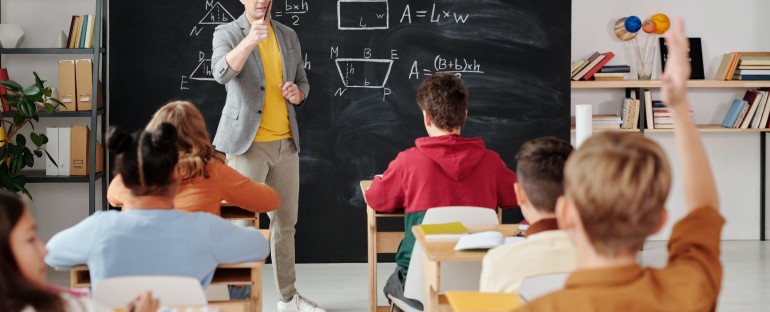Photo by Max Fischer
Traditionally, schools within the same city or schools under the same name, regardless of location, follow a specific academic system. For the longest time, this is how it’s been. While this generally works, it fails to address the needs of children suffering from PTSD or other cognitive issues.
When children lag behind academic requirements, how do parents usually react? Whenever they express confusion over a subject they consider their weakness, where do adults point their fingers for accountability?
More often than not, when children fall behind academically, the blame ricochets back at them. Parents tend to express worry and frustration, which, to a certain extent, is expected. After all, their child having trouble in academics means something is wrong in the equation. They may either be denied the best or fail to give their best – both are what parents want.
Identifying where the problem lies and who’s responsible for it can be challenging. There are numerous factors to consider. However, rather than considering if the school needs to provide quality education leading to their children’s situation, parents may initially and instantly put the blame on the child. They may believe their children are slacking off, playing more instead of studying, or aren’t just intellectually gifted, assumptions that are unfair to the children.
Blame-Game: More Damaging Than Helping
Parents only want what’s best for their children. This means the best education and the best reputation. They don’t want their children to grow up labeled as the dullest light in the shed. Hence, parents are always ready to step in and help if they’re in trouble.
If parents only want to help their children, blaming them for the situation makes more sense as it makes the circumstance changeable. While it looks unfair from an outsider’s perspective, this helps parents take matters into their own hands.
Blaming the educational system is something outside parents’ power and control. They can say it’s the teacher’s fault or the system isn’t doing its best all they want, but what happens next? In an idealistic world, the situation can quickly improve. Realistically? It can be too far of a stretch to hope for. However, holding children accountable means they can buy more materials for the child to learn from. Parents can replace their playtime with more studying and hope for an improvement, giving them more satisfaction that they’ve proactively attempted to improve matters.
But what does this lead do?
There may be significant changes in the child’s performance at the expense of their childhood fun and enjoyment. Or, the problem may persist, and parents are left with deep-seated frustration and pessimism about the situation. Either way, things damaged and weakened the children’s relationship with their parents.
An Obvious Solution: Education
When everything has gone south, what should parents do?
The solution has been said. Parents can and should put accountability on the educational system, not their children. This is the better, more rational, and child-fair option. But it is also easier said than done.
In education, there are a lot of factors to consider. These play a significant role in every child’s learning capacity and performance. There’s age, the child’s natural learning pace, learning style, and if there are any problems to consider. Based on how children are typically grouped in school, it’s safe to say that the academe prioritizes age. The first grade’s lessons are different than the second grade’s. How their teachers approach them also varies depending on their level. Whether or not the system takes into consideration the other factors are obscure. If they do, then it’s not evident in their processes.
A Different Approach: Differentiated Learning
Beyond categorizing children based on their ages and labeling them fast or slow learners, the academe should also consider other factors.
Carolyn Nooks-Teague’s book, The Three Dimensions of Learning, encourages this change in the educational system. Instead of urging establishments to follow a one-size-fits-all learning structure, Carolyn’s book discusses how learning can be maximized more through differentiated learning. This way, children aren’t the ones actively adjusting to the learning method. The system accommodates and caters to all learning styles children practice. The book aims to address the needs of children suffering from PTSD or other cognitive and developmental problems which affect their learning capacity and pace.
Differentiated learning means checking every child’s needs and tailoring suitable learning programs. This allows children more freedom to work independently on a subject or topic without comparison to how others are doing, focusing on their progress. In creating this environment for children, the academe works with a system that suits children’s needs rather than achieving educational objectives.



